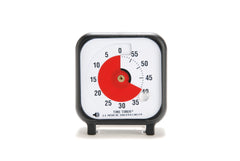Blog — bedtime routine

Sample Toddler Daily Routines from a Pediatric OT
As the parent of a toddler, you know how challenging these years can feel - simply getting through a full day can be tough at times, am I right? Toddlers are notoriously known for their strong-willed personalities, big emotional swings, and testing of boundaries. They can also be SO sweet and so fun to be around, as they truly come into their own in these early years. As usual in parenting, multiple conflicting emotions can be felt at once!
Physiologically-speaking, a toddler’s brain, particularly the areas that control executive functioning (things like planning, decision-making, impulse control, and focus) are still under major development in the early years. This means that toddlers will struggle with all of these types of skills - and that’s normal! However, it also means that they can show up with big feelings, long tantrums, and overall difficulty getting through parts of their day, which can in turn, make our job as parents/caregivers, feel very difficult.
One of the BEST things you can provide as a parent or caregiver for a toddler is a consistent daily routine. Why? Because predictability helps your child’s brain feel safe and secure, therefore leading to easier transitions, a better mood, and an overall happier child…. And who wouldn’t want that?!
Let’s take a look at what an example of a daily routine for a toddler (2-4 years old) may look like for a day at HOME:
- Wake up
- Eat breakfast
- Get dressed, brush teeth, use potty
- Independent play time
- Morning outing or activity (park, errands, play group, craft, etc)
- Eat lunch
- Nap or quiet time
- Afternoon snack
- Afternoon activity (structured play, outdoor time, errands, etc)
- Independent play and/or screen time
- Eat dinner
- Play time
- Start bedtime routine (bath, potty, brush teeth, pajamas, etc)
- Goodnight!
Next, let’s look at an example of what a daily routine may look like for a toddler who attends DAYCARE/SCHOOL:
- Wake up
- Eat breakfast
- Get dressed, brush teeth, use potty
- Go to daycare/school
- Come home from daycare/school
- Afternoon snack (Optional, depending on what time your child arrives home)
- Structured play, if time allots
- Independent play and/or screen time
- Eat dinner
- Play time
- Start bedtime routine (bath, potty, brush teeth, pajamas, etc)
- Goodnight!
The most important thing to note for both routines is that the exact time that each activity takes place is less important than the overall flow of the day. Every family is going to be on a different “schedule”, but we can always create a daily rhythm for the day. And remember - some days your routine will be off, and that’s okay!
If your toddler is having trouble transitioning between parts of their day (for example, from independent play to the potty, or from screen time to dinner time), a visual timer can work wonders in the toddler years. This lets your child “see” how much time is left before they are expected to go from one thing to the next. You can let them help you set it, then give them advance warning about what exactly is going to happen when the timer goes off. For example, you can say “When the timer beeps, we are going to say good-bye to our trucks and go into the bathroom”.
My favorite visual timer to use with children is the Time Timer - the MOD and the PLUS 20-Minute are two favorites to use at home. Use code ‘ROOTED23’ for 10% off your order! Code valid through 5/19/23.
Looking for more guidance on how to structure your toddler’s daily routine? Struggling with specific parts of the day like bedtime, picky eating during meals, or tantrums? Check out my COMPREHENSIVE DAILY ROUTINE GUIDES. These multi-page digital download guides will teach you exactly how to structure your child’s routine and troubleshoot common toddler issues with simple and realistic tips and strategies that work! Grab the 2-3 Year Guide or the 3-5 Year Guide to match your child’s age.
About our Guest Author

Jessica Rapp Irwin, OTR/L, is a pediatric occupational therapist, childhood routine expert, and lover of all things child development. She is the founder of Rooted in Routine, an online parenting education community and platform,, to help parents learn simple, easy to implement routines for optimal child development for babies and young kids. She is passionate about educating parents on NORMAL, HEALTHY development, which is often simpler than we think. Jessica’s approach is largely rooted in going back to the basics to help you establish solid, age-appropriate routines for your child for things like eating, play, and sleep. She believes this is the most important foundation you can provide for your child - and she wants to help you do just that!
Learn more about Jessica here and follow her on Instagram to connect.

Make Daily Routines at Home a Little Easier with Time Timer
Establishing routines can help you and your family feel some sense of control over some of the chaos in your everyday life at home. Focusing on ways to maintain these routines is an important way to get started maintaining a sense of order in everyday life. This may be particularly true if you have children in your household.
Our Best Tips for Adjusting to the Daylight Saving Time Change
Time springs forward Sunday, March 14th! Daylight Saving Time changes affect regular schedules and routines as well as the body’s internal rhythms. We’re sharing our best tips for the whole family to have a smooth adjustment to the Daylight Saving Time change.
Tips for Preparing Your Kids for Success in the New School Year
We share tips for setting your child up for success this school year and beyond. Take a look at these tips now.
How to Use the Time Timer with Children at Home
Time is an abstract concept, and Time Timer provides a concrete representation of that concept. For both adults and children, seeing time elapse makes it easier to focus and anticipate transitions. With many parents continuing to work from home while also caring for young children, here are 7 tips to help.
How Sleep Is Affected by Daylight Saving Time Changes
With our clocks about to "spring" forward, it can have more effect on your sleep than you know. Today we discuss how Daylight Savings interrupts your sleep and how to improve your sleep.
Tips From a Parenting Expert That Uses the Time Timer in Everyday Life
Allana Robinson is a Parenting Effectiveness Coach in Western Canada. As a parenting coach for infants, toddlers and preschoolers, and a previous Early Childhood Educator and Developmental Specialist, Allana talks about all the ways Time Timers have helped in her everyday life and the lives of her clients.
Seven Tips for Test Taking
Seven Tips for Test Taking

Spring has sprung here in the U.S., which means more daylight, trees in bloom, soccer games...and testing are just around the corner! We’ve got tips and tricks to help you prepare.

Over the River and Through the Woods Without Losing Your Sanity
Any other time of year, you’d be spending a lot of time organizing a family trip out of town. At the holidays, however, the travel part can be an afterthought.I put together some of my favorite travel tips to make things easier this year so you can have more jolly and less worry.
 1. Time Timer ® Watch Plus: No sense burying the lead here. The Watch Plus is the answer to your “Are we there yet” misery. Use the timer function and plug in how much time is left in the trip (add a 10-minute cushion), and hand over your watch. Even though I work for Time Timer, I only recently thought of this one. Sure, the Time Timer is on the tablet and phone, but kids might switch those, and I’m certainly not giving up my phone on the trip. (I’m not driving!) I give it to my impatient child, and voila! It was amazing. He felt in total control of the time remaining on the trip.
1. Time Timer ® Watch Plus: No sense burying the lead here. The Watch Plus is the answer to your “Are we there yet” misery. Use the timer function and plug in how much time is left in the trip (add a 10-minute cushion), and hand over your watch. Even though I work for Time Timer, I only recently thought of this one. Sure, the Time Timer is on the tablet and phone, but kids might switch those, and I’m certainly not giving up my phone on the trip. (I’m not driving!) I give it to my impatient child, and voila! It was amazing. He felt in total control of the time remaining on the trip.
3 Ways to Have More Fun with Less Sugar on Halloween!
 Halloween can be a lot of fun--but oftentimes, it’s also a lot of sugar. Whether you’re worried about the health concerns, or trying to make sure you get enough Reese’s pumpkins for your secret stash above the fridge, limiting your kids’ intake of Halloween candy can help you make Halloween healthier for your kids.
Halloween can be a lot of fun--but oftentimes, it’s also a lot of sugar. Whether you’re worried about the health concerns, or trying to make sure you get enough Reese’s pumpkins for your secret stash above the fridge, limiting your kids’ intake of Halloween candy can help you make Halloween healthier for your kids.
Time Timer ® spoke with Beth Robeson, The Picky Eater Coach, who offers 3 Ways to Have More Fun with Less Sugar this Halloween:
Thank you, MOMCON2016

We recently returned from MOMCON in Milwaukee, where we shared the Time Timer ® with moms from the MOPS (Mothers of Preschoolers) International.
As a family-based company, all of us at Time Timer ® loved being a part of this year’s celebration of inspiration and faith for moms. Before it was a household name, the original Time Timer ® was founded in an everyday household in suburban Cincinnati, Ohio.
Jan Rogers struggled to help her daughter, Loran, keep track of time. She wasn’t old enough to read clocks and often missed the bus. So, mom Jan invented Time Timer, which features a patented red disk that shows elapsed time.

It's Time to Establish a Routine for Preschool Bedtime
If you already have an awesome bedtime routine for your preschooler, congrats! You can skip this article, and just share your tips with us.
For the rest of us, whether it was the start of school for our older kids or a change in sleep habits for our infant, it never hurts to consider a bedtime routine that works to get our preschoolers to sleep on time, and maybe even get time for ourselves.


